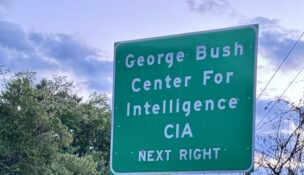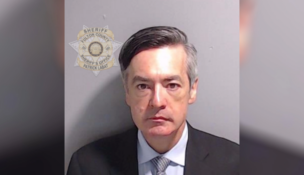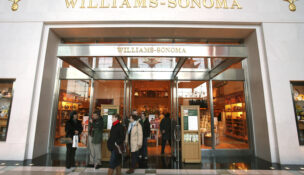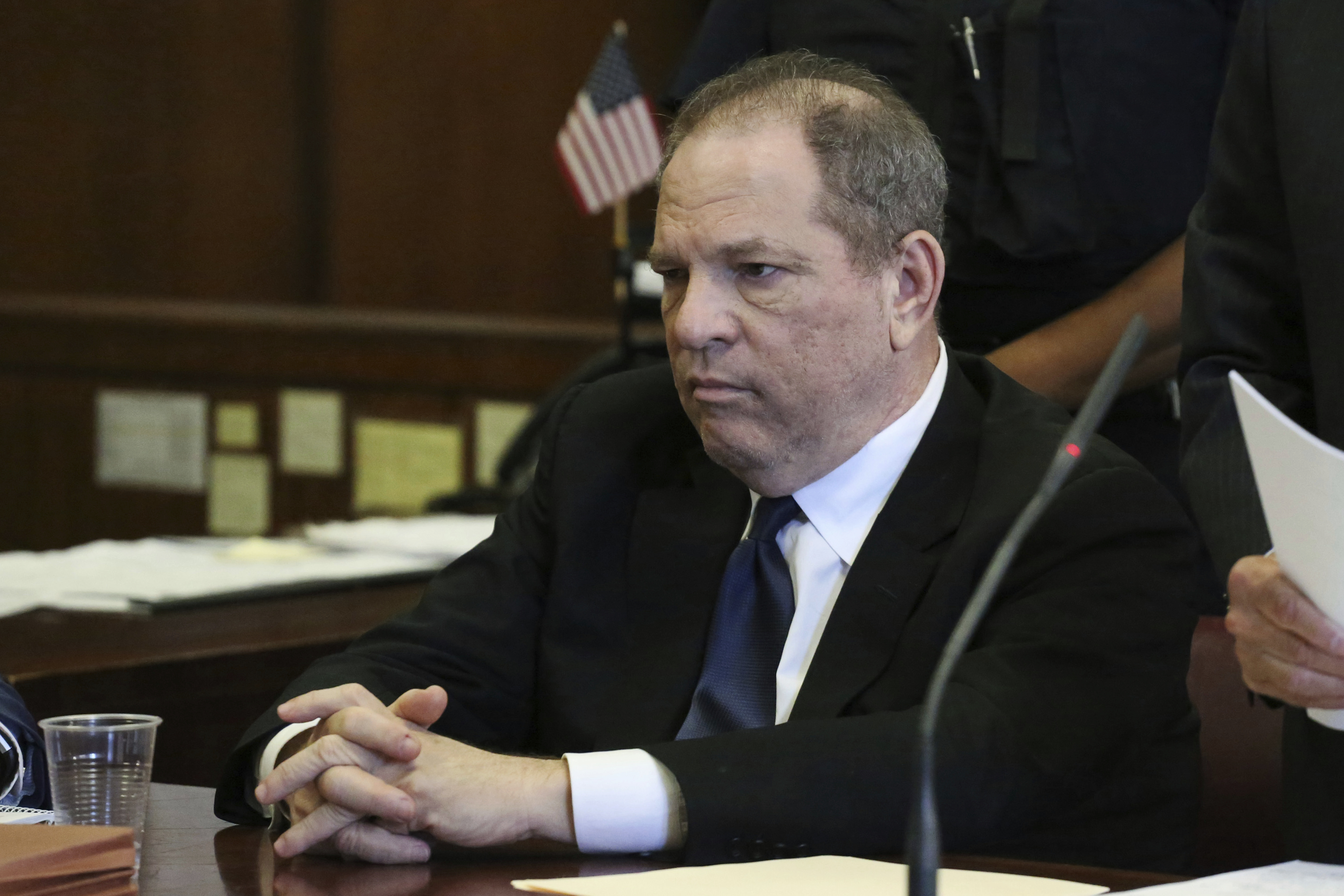Uniquely Wisconsin: Wisconsin’s laws and roadway culture unlike anywhere else on planet
By: Steve Schuster, [email protected]//June 28, 2023//
Uniquely Wisconsin: Wisconsin’s laws and roadway culture unlike anywhere else on planet
By: Steve Schuster, [email protected]//June 28, 2023//
By Steve Schuster
[email protected]
Editor’s Note: On June 19, Managing Editor Steve Schuster and Reporter Ethan Duran participated in a ride along with the Wisconsin State Patrol in Ozaukee County, Wis.
Wisconsin’s unique rules of the roads create both benefits and challenges to the motoring public in comparison to other states.
Wisconsin – population 5.89 million (2020) – has more than 115,000 miles of road, according to the Wisconsin Department of Transportation (WisDOT).
With the exception of Indian Reservations, the Wisconsin State Patrol has jurisdiction on most of those roads: whether it’s 27th Street in Milwaukee, an interstate, U.S. highway, state highway or a county road.
Typically, the State Patrol doesn’t patrol in the city of Milwaukee, but with the spike of reckless driving incidents, the State Patrol has been pitch-hitting for the Milwaukee County Sheriff’s Department – something that Milwaukee Mayor Cavalier Johnson said he appreciates.
“I am grateful for the support from the State of Wisconsin in our reckless driving efforts. Governor Evers’ State Patrol, which ordinarily does not operate in the city, has assisted us on multiple occasions,” Johnson said during Milwaukee’s State of the City address on Monday.
You don’t have to look far to see that Wisconsin’s law and cultures are unique.
Rules of the Road – Those damn FIBs*
Wisconsin drivers typically travel at a much slower pace than other places, such as Illinois, or cities along the eastern seaboard, according to Wisconsin State Patrol Master Trooper Brendan Braun.
When stopped at a red light, the Wisconsin Law Journal took note of when the light changed to green the delay before Wisconsin motorists proceeded through the intersection, in comparison to sitting at a traffic light in the Chicagoland area where motorists typically accelerate the very moment the light turns green. That can create other issues if a driver runs a red light and the intersection isn’t clear.
When asked the reason why so many Illinois drivers are pulled over, the Wisconsin State Patrol said it has nothing to do with trying to get out-of-state revenue.
“It’s so stereotypical, but in my experience people in Illinois drive a lot faster,” said Braun.
“That’s just the environment down in Illinois … and that carries through up here (with Illinois drivers traveling too fast in Wisconsin),” he added.
Unlike Wisconsin, many states, including Illinois, also have red light cameras, which according to a Tribune investigation actually caused more rear-end collisions.
Until recently, red light cameras were prohibited in Minnesota after a court ruled that they were unconstitutional, presuming guilt before innocence.
Wisconsin also prohibits the use of speed cameras, unlike many other states, including Illinois.
Illinois recently lowered the threshold to 6 mph for an Illinois motorist to receive a speed camera ticket by mail. Critics of speed cameras and red-light cameras have said the deployment of cameras in cities such as Baltimore and Chicago are done so purely as a form of revenue, not in the interest of public safety.
“It’s gotcha government,” former Maryland Senator James Brochin said in a Baltimore Sun Media Group article that specifically referenced when the cameras operate when workers are not present.
Back in Wisconsin, the State Patrol says quotas for speeding tickets are illegal under Wisconsin Law. That’s not the case in many other parts of the country.
The New York Times reported, although federal officials say they do not impose quotas, at least 20 states have evaluated police performance on the number of traffic stops per hour, which critics say contributes to over policing and erosion of public trust in states outside of Wisconsin that employ those tactics.
Back in Wisconsin … According to WisDOT, Wisconsin statutes determine the amount of the base deposit for traffic violations, excluding traffic violations charged under local ordinance. This procedure ensures uniform base deposits for all Wisconsin state and county traffic citations:
- 50% of the base deposit goes to the county where the citation was issued; and
- 50% of the base deposit goes to the state common school fund.
For traffic citations issued for municipal traffic violations, 100% of the base deposit is distributed to the municipality that issued the citation for a municipal traffic violation.
During a Wisconsin State Patrol ride-along with TMJ4, Braun was asked if he believes Wisconsin should enact legislation similar to a law in Illinois that addresses aggravated speeding.
Pursuant to Illinois law, if a motorist is cited for traveling more than 26 mph over the posted or zoned speed limit, it is no longer considered a petty offense and is classified by a Class A misdemeanor.
“Personally, I don’t think adding more punishment would make a difference. If it made a difference in Illinois no one would be aggravatedly speeding, right? What we have right now (in Wisconsin) as far as penalties (for speeding), I think we are good,” Braun said.
When asked for an example of a law in place in other states, but not in Wisconsin, that could benefit the safety of the motoring public, Braun said, requiring semi-trucks to keep right on the interstate.
The Wisconsin Law Journal reached out to both Democrat and Republican legislators to see if they are open to the idea of enacting legislation requiring trucks to keep right.
During an interview with Sen. Chris Larson’s office on Wednesday, Justin Bielinski, director of communications for Sen. Larson said, “that would be something worth exploring.”
Bielinski said, “Illinois has signs semi’s keep right. I think that makes sense. It can be very scary when there is a semi on the left and right of you and visibility is limited.”
Technology shaping policing
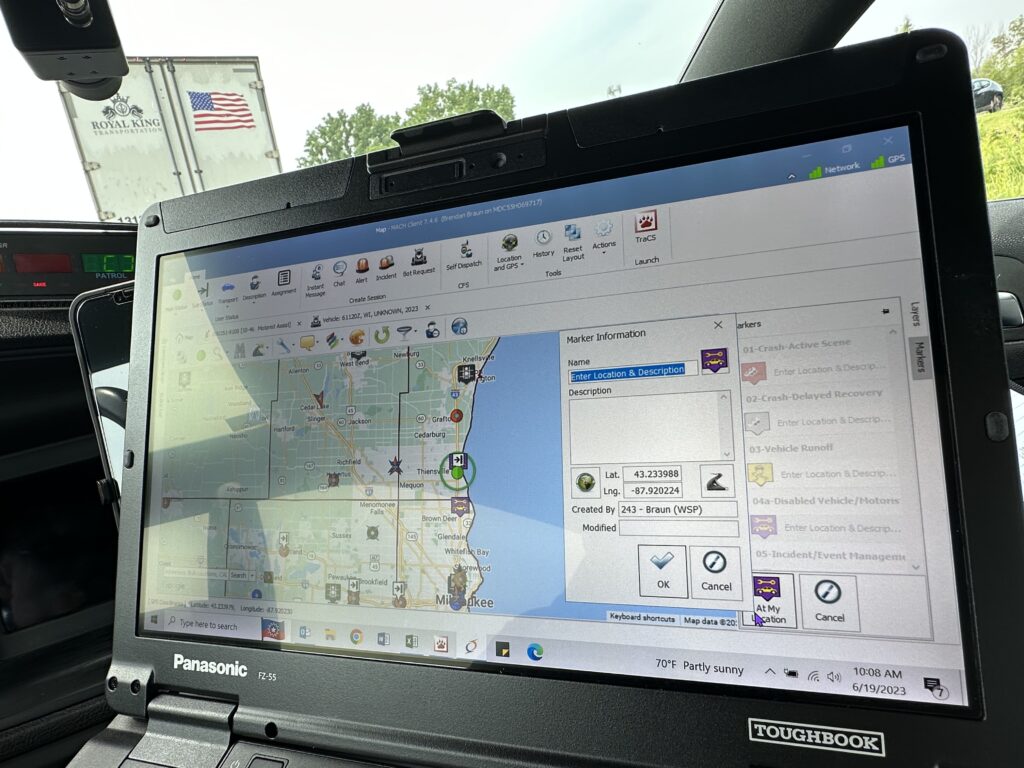
Years ago in Wisconsin, a speeding ticket was issued by hand, but now a computer in the squad car and a printer in the backseat have made things high tech and more efficient for police and motorists.
Unlike several other states, the Wisconsin State Patrol does not employ plate readers or Flock cameras at this time, Braun noted.
Although the Wisconsin State Patrol has 14 drones deployed in various areas in the state, they are not used to catch speeders, Braun said.
Meanwhile in Illinois, the state has recently expanded police’s ability for drone surveillance.
As previously reported, in Wisconsin the left lane on interstate highways is a travel lane, not a passing lane, which can be one source of road rage, said Braun.
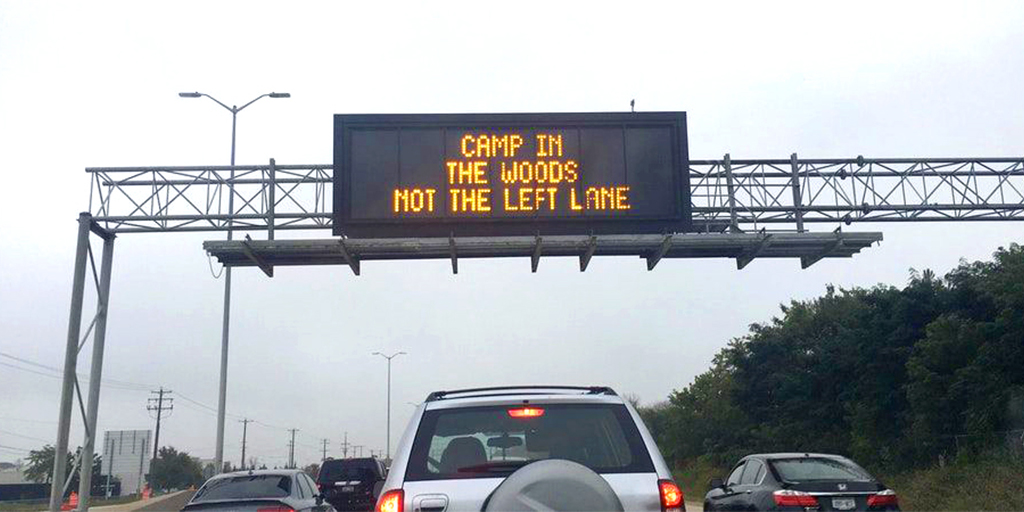
Braun said that in the 23 years of enforcing Wisconsin’s traffic laws, he’s observed his share of motorists driving below the posted or zoned speed limit creating frustration for motorists and in some cases even instances of road rage.
Pursuant to Illinois law, “when driving on an interstate highway … a driver may not drive in the left lane(s), except when passing another vehicle.”
So why doesn’t the Wisconsin Legislature pass a similar law to reduce instances of road rage?
The short answer? Wisconsin’s unique culture.
“I don’t know how you change an entire culture,” Bielinski previously said during an interview earlier this month.
According to Bielinski, it would take a large taxpayer investment of law enforcement resources to enforce the legislation (making the left lane a passing lane on Wisconsin interstates.)
Also as previously reported, Wisconsin remains the only state in the nation where operating while intoxicated (OWI) is classified as a traffic violation in Wisconsin, rather than a criminal matter for a first offense.
When asked what the State Patrol thinks about a first offense DUI being non-criminal Braun said, “I think that’s a cultural thing. I don’t think it will ever change. I’ve been on 23 years and I don’t ever see it ever changing.”
Bielinski previously said bills to criminalize first offense drunk driving in Wisconsin did not advance because of the Tavern League’s heavy pay-to-play influence over lawmakers.
A Wisconsin Law Journal investigation revealed the Tavern League of Wisconsin has donated more than $685,585 to Wisconsin Republicans and $151,849 to Wisconsin Democrats over the past three decades, according to FollowTheMoney.org.
Wisconsin is also among states that does not generally require use of a hands-free Bluetooth device while driving a motor vehicle. Under current Wisconsin law, a handheld cell phone is prohibited only in a work zone, or if a driver has a probationary license, or instructional permit.
Discretion
Trooper Braun said the Wisconsin State Patrol has a tremendous amount of discretion when it comes to pulling over speeders. “Technically you can get pulled over for going a few miles per hour over the limit, but our guidance typically suggests to write a citation at 11 mph or more,” he said.
Politics
Braun said the State Patrol is non-partisan and equally protects Democrats and Republicans.
“We’ve provided assistance with the security detail for Nancy Pelosi and Paul Ryan,” Braun said noting that under former Governor Walker the state patrol was assigned to governor detail.
“We watched him mow his lawn in Wauwatosa when he was governor,” Braun said noting that the former governor’s mother recently texted him to check in and say hello.
Evolution of laws
Braun noted that years ago the State Patrol made headlines for having credit card machines in squad cars deployed along the Illinois border in Kenosha County.
“When I started 23 years ago traffic citations were a bond. Kenosha guys had credit card machines in their car and out-of-state drivers had to pay right away, or they would take a AAA bond card,” Braun said, noting that isn’t the case anymore.
County road what?
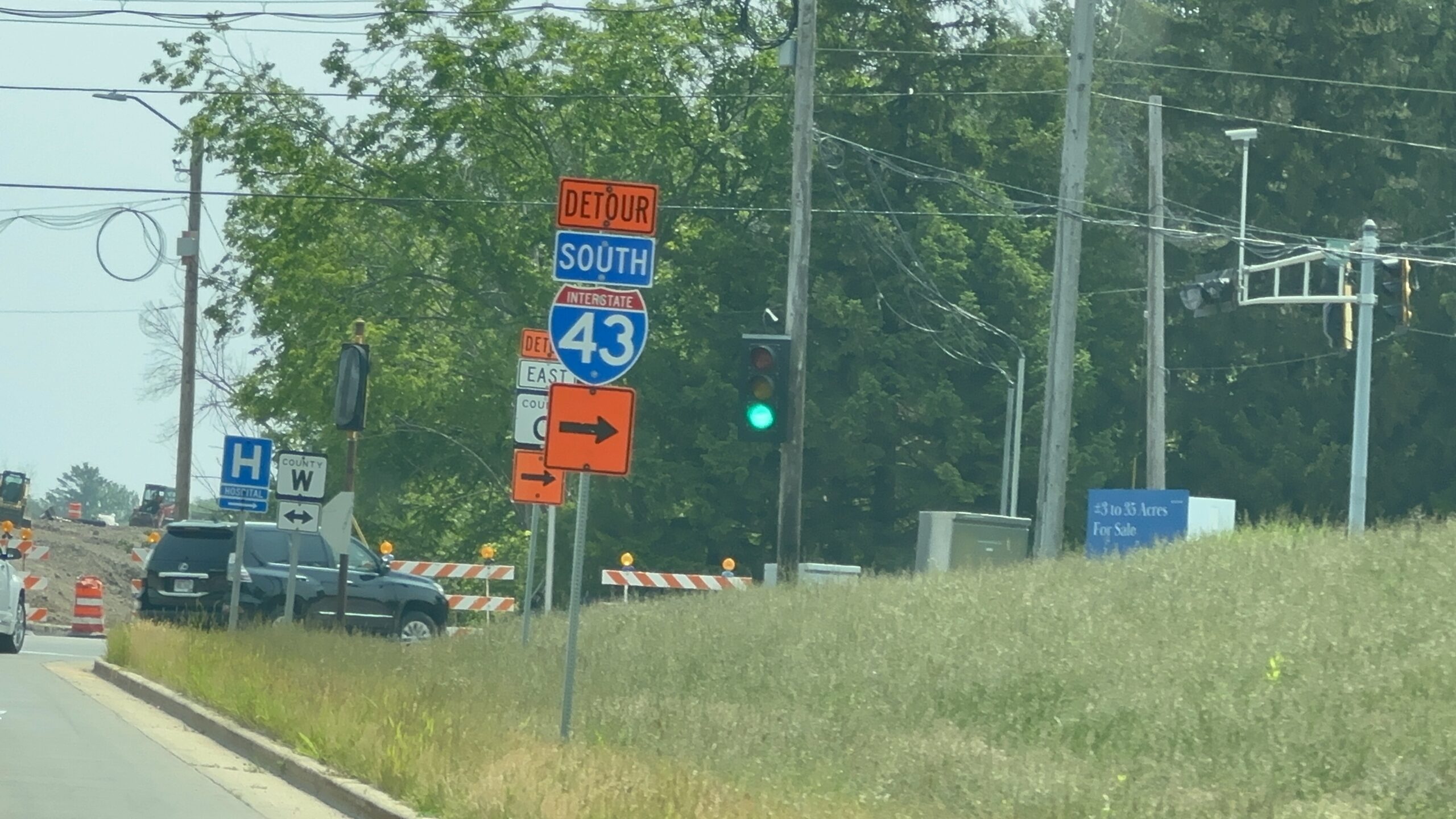
Wisconsin is among the minority of states where county roads are identified with letters. Most states use numbers to identify county roads. (Staff photo by Steve Schuster)
Similarities
Similar to several other states, the Wisconsin State Patrol uses Laser and KA band to catch speeders, but also catches speeders using airplanes.
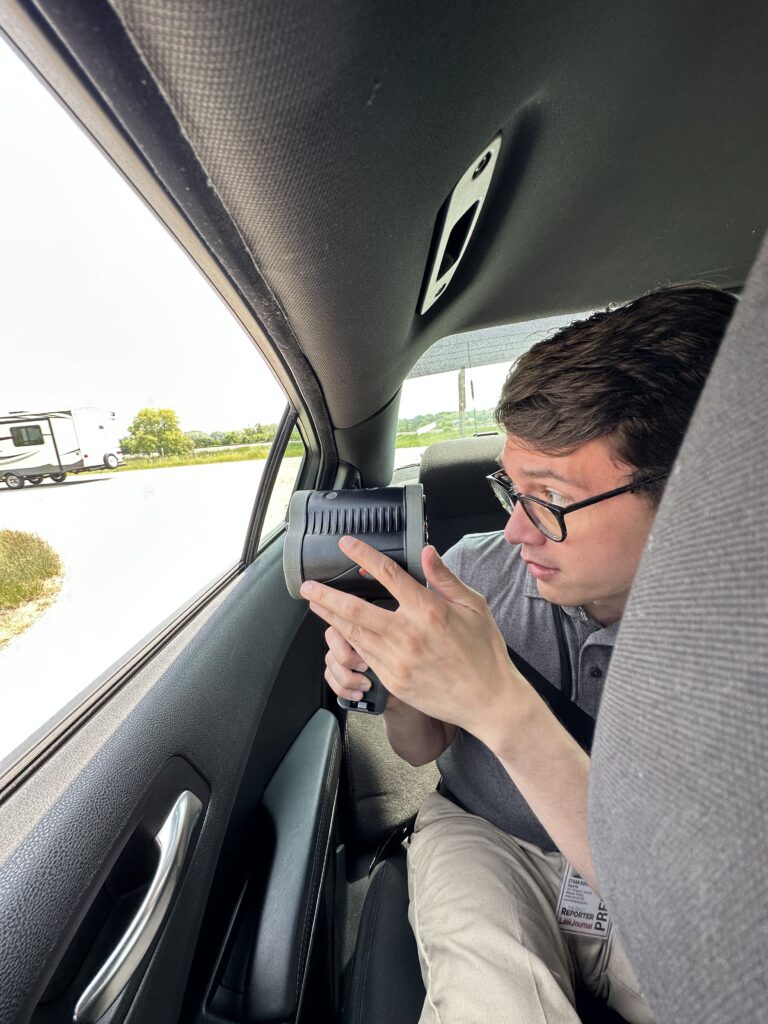
“They use a stopwatch in the air and time how long it takes to get from one marker on the road to another,” Braun said.
State Police take the measurements several times to see if the driver gets from point A to point B in less than a certain amount of time and if the math adds up to speeding, they radio down to the ground to a patrol car to pull over the driver.”
Braun said sometimes catching speeders is “like fishing.” There are times law enforcement officers clock a speeder, but it isn’t safe to turn around or there isn’t a shoulder to pull them over. Challenges like this for the Wisconsin State Patrol are similar in other states.
“We don’t want to create situations worse than they already are by risking others’ lives to catch a speeder,” Braun said.
Excuses … Excuses
Braun said typical speeding excuses or justifications he hears are “I wasn’t paying attention,” or “I’m late for a flight.”
For the record, Braun said there are very few legitimate reasons to speed. One example is a life or death emergency on the way to the hospital, but in most cases an ambulance should be called for that anyway.
“There was once a lady with really bad diarrhea. I gave her a warning,” he said.
When Braun trains new trooper cadets he says they should evaluate each situation on a case-by-case basis to determine the best course of action in the present moment.
America’s Dairyland and orange barrel safety
There used to be a saying in Wisconsin there are two seasons — winter and construction. Braun said that construction season now spans well beyond Summer as crews stage roads with orange barrels before peak construction projects.
“That way the construction crews can dive right in when the weather warms up,” Braun said.
According to Braun, the State Patrol, WisDOT and construction crews meet weekly to discuss the latest construction developments and identify opportunities to improve safety for the motoring public.
Officials communicate to better understand when and where lane shifts and exit closures happen ahead of time.
WisDOT’s traffic team works with the contractor and emergency responders to develop work zone access plans so emergency responders know how to respond to incidents inside of work zones, WisDOT officials said. First responders also work with the traffic team to find the best routes to access businesses and residents during closures, and the project team sets up individual meetings with first responders in the field when needed.
Speeding and accidents are on the rise since COVID started. Milwaukee County Sheriff’s Office and North Shore Fire Rescue officials told the Wisconsin Law Journal on Tuesday they responded to multiple crashes involving injuries requiring hospital transportation on I-43 Southbound near Good Hope Road. In one case a vehicle was stopped and was rear-ended. Milwaukee County Sheriff’s officials said in 95% of these types of accidents a driver is cited for inattentive driving and/or following too closely.
Ozaukee County Sheriff’s office also issued a statement on Tuesday noting a two-vehicle crash involving injuries on highway 57 in Fredonia.
“A portion of STH 57 northbound at CTH H was blocked off for approximately 1 hour 15 minutes as the investigation was conducted. The road reopened at 5:44pm.”
The operator of the dump truck was cited for Operator Violate Red Traffic Signal, Inattentive Driving, and Failure to Obey Sign,” Ozaukee County Sheriff officials said.
On Wednesday morning, Milwaukee Police issued a statement about a fatal crash that occurred on the city’s north side after a motorist ran a red light.
Give ‘Em a Brake
As orange barrels line Interstate 43 between Glendale and Grafton, law enforcement, the Wisconsin Department of Transportation and contractors are working in collaboration to keep the motoring public and construction crews safe.

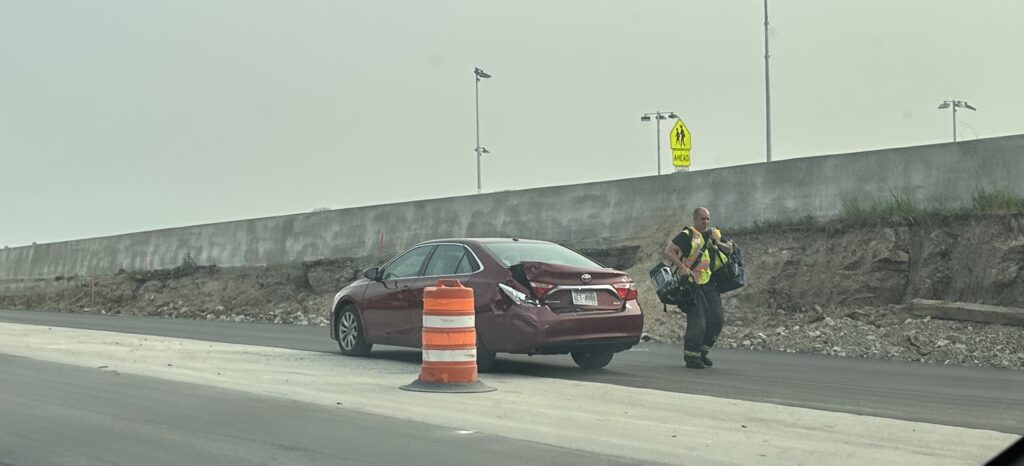
Slowing down traffic is no easy task for law enforcement.
Speeders tend to “self-correct” if they see flashing lights on the side of the road, officials said.
“Visibility is the easiest way to slow traffic and curb dangerous driving behavior in the construction zone,” Braun said.
Officials with the Wisconsin Department of Transportation are asking Fourth of July holiday travelers to buckle up, stay alert and expect slower traffic in work zones and along major travel corridors. According to AAA, Wisconsinites will travel in record numbers this holiday weekend. Peak travel times are expected between 10 a.m. and 5 p.m. Friday (June 30), noon to 3 p.m. Tuesday (July 4) and 3 to 6 p.m. Wednesday (July 5).
WisDOT safety reminders:
- Buckle Up, Phone Down – every trip, every time. Encourage family, friends and co-workers to take the pledge.
- Slow down. Posted speed limits apply to ideal travel conditions. Drivers are required to travel at a “reasonable and prudent” speed based on weather and traffic conditions.
- Eliminate distractions and focus on what’s ahead. Texting while driving is prohibited and very dangerous. It is also illegal in Wisconsin for drivers to use a handheld mobile device in work zones.
- Move over or slow down for emergency responders stopped along a highway with their warning lights flashing. That includes police and fire vehicles, ambulances, tow trucks and highway maintenance vehicles. In addition, state law restricts use of a cell phone in areas surrounding those vehicles.
- Steer It, Clear It! State law requires drivers to move vehicles involved in a crash out of traffic if no one is hurt and the vehicles can be moved safely. If someone is hurt or the vehicle is disabled, drivers should not risk injury by trying to push the vehicle out of traffic.
WisDOT stats:
March – June 2022:
- 289 total citations issued in interstate work zones
- 128 citations issued for speeding 11 mph or more over the speed limit in interstate work zones
March – June 28, 2023:
- 349 total citations issued in interstate work zones
- 218 citations issued for speeding 11 mph or more over the speed limit in interstate work zones
*When the Wisconsin Law Journal refers to FIBs, we mean Fabulous Illinois Brethren.
Legal News
- Newly filed report with federal court seeks Havana Syndrome transparency
- Questions of transparency, leadership responsibility linger over State Bar trust
- Firm demands $4.3M in dispute with Wisconsin client
- Chesebro among those charged with interfering in 2020 election
- Williams-Sonoma must pay almost $3.2 million for violating FTC’s ‘Made in USA’ order
- Harvey Weinstein due back in court, while a key witness weighs whether to testify at a retrial
- Protests erupt on college campuses throughout Midwest, and U.S. over war in Gaza
- Flight attendant indicted in attempt to record minor in airplane bathroom
- Wisconsin attorney loses law license, ordered to pay $16K fine
- Former Wisconsin police officer charged with 5 bestiality felony counts
- Judge reject’s Trump’s bid for a new trial in $83.3 million E. Jean Carroll defamation case
- Dozens of deaths reveal risks of injecting sedatives into people restrained by police
WLJ People
- Power 30 Personal Injury Attorneys – Russell Nicolet
- Power 30 Personal Injury Attorneys – Benjamin Nicolet
- Power 30 Personal Injury Attorneys – Dustin T. Woehl
- Power 30 Personal Injury Attorneys – Katherine Metzger
- Power 30 Personal Injury Attorneys – Joseph Ryan
- Power 30 Personal Injury Attorneys – James M. Ryan
- Power 30 Personal Injury Attorneys – Dana Wachs
- Power 30 Personal Injury Attorneys – Mark L. Thomsen
- Power 30 Personal Injury Attorneys – Matthew Lein
- Power 30 Personal Injury Attorneys – Jeffrey A. Pitman
- Power 30 Personal Injury Attorneys – William Pemberton
- Power 30 Personal Injury Attorneys – Howard S. Sicula





